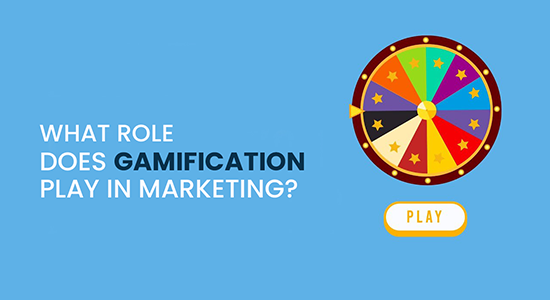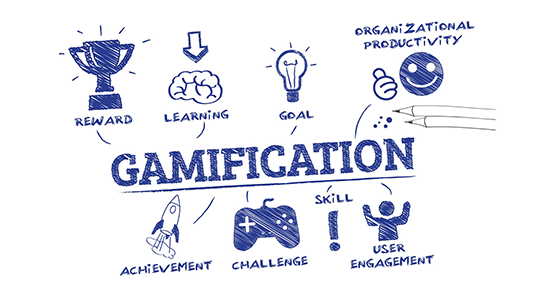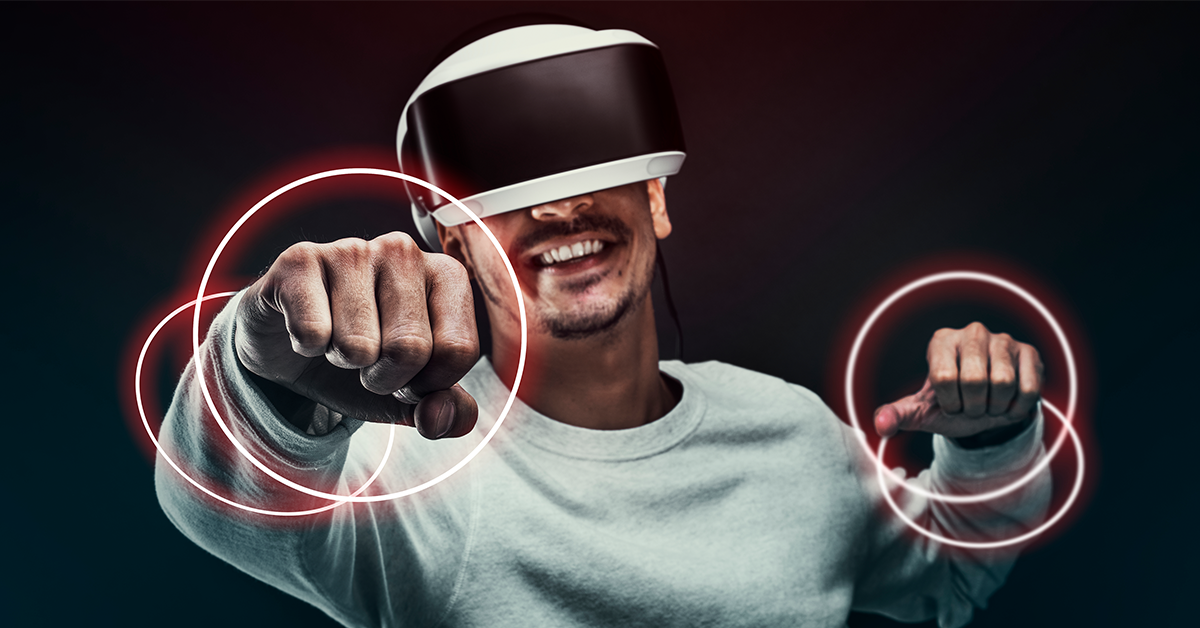Apps like Duolingo and Habitica are becoming popular today. We all interact with such vibrant applications to achieve our goals. This trend is gradually becoming more recognized because of its utility. Such apps help monitor our daily life objectives and habits, thereby supporting a contemporary lifestyle. Industrialists call this dynamic app engagement ‘Gamification.’
Global marketing conferences have taken up this topic as a high-demand debate, with the primary question being, “can gamification drive marketing?” Let’s break it down and settle the debate with facts and discussions from the Marketing 2.0 Conference.
The Concept Behind Gamification:
Whether we know it or not, we have all interacted with online apps that serve our purposes in a fun and exciting manner. For instance, ‘Forest’ is a productivity app that is gaining increasing popularity today among students and working professionals. It allows the user to focus on a particular task without being distracted by their phones. Meanwhile, as one works on their task, the app builds a forest of lush trees over time, leaving them satisfied with the greenery and personal goal fulfillment. What an exciting way to maintain focus while growing a virtual forest! Such apps are a perfect example of the term gamification.

So, What Exactly Is Gamification And How Often Is It Used Today?
In today's fast-paced world, gamification has emerged as a powerful tool to engage, motivate and inspire individuals. Gamification is the process of applying game-like elements to non-game contexts to motivate and engage users.
According to experts at major marketing events and conferences, the gamification market is expected to grow from $7.98 billion in 2020 to $22.9 billion by 2026. The increasing use of gamification in various sectors is the primary driver of this growth. With such statistics, it's evident that gamification is more than just a buzzword and has become a powerful tool for businesses and individuals alike.
Gamification In Education:
There are many conferences today that educate marketing professionals about the usability and application of gamification in their respective domains. For instance, its usage in the field of education is predicted to improve learning outcomes and increase student engagement. According to a study by the University of Colorado, gamified learning environments improve student motivation and concentration, leading to better academic performance. Companies like Duolingo and Kahoot! have used gamification to create fascinating and interactive learning experiences.
Improved Healthcare And Financial Outcomes:
In the healthcare industry, gamification is used to motivate patients to adopt healthy habits and lifestyles. A study by the American Heart Association found that gamification can increase physical activity levels by up to 48%. Apps like Fitbit and MyFitnessPal use gamification to motivate users to track their daily activity and reach their fitness goals. Another app called ‘Zombies, Run!’ is a fitness app that gamifies running by immersing users in a zombie apocalypse storyline.
Gamification has also proven beneficial for one’s personal financial stability. There are personal finance apps that use gamification to encourage users to save money and reach their financial goals. For example, ‘Acorns’ is an app that invests users' spare change and encourages them to save and invest more.

What Role Does Gamification Play In Marketing?
Gamification is used in marketing to engage customers and increase brand loyalty. Upcoming conferences for marketing enthusiasts and professionals discuss the advantages of this approach n a modern setting. A study by Gartner predicts that gamification will become a standard feature in customer engagement strategies by 2024. Companies like Nike and Starbucks have used gamification to create loyalty programs that reward customers for their purchases. Here’s how:
-
Starbucks Rewards is a loyalty program that rewards customers for their purchases and uses gamification to incentivize them to reach higher membership levels. The greater the membership points, the more benefits on purchases and extra offers.
-
Nike Training Club uses gamification to motivate users to complete their workouts and earn badges. It is a fitness program app that allows the user to keep up with the scheduled workouts and maintains their progress online, while simultaneously promoting the brand.

Benefits of Gamification in Marketing:
- Increase brand awareness:
Gamification can be used to create fun and interactive experiences that are shareable on social media platforms. By creating branded games or challenges that are easy to share, companies can increase their visibility and reach more potential customers.
- Build customer loyalty:
By offering rewards and incentives for engaging with a brand, gamification can encourage customers to become loyal advocates for the brand. For example, a loyalty program that uses gamification elements can keep customers engaged and coming back for more.
- Encourage customer engagement:
Gamification can be used to create interactive experiences that encourage customers to engage with a product or service. This can help increase customer retention and improve customer satisfaction.
- Generate data and insights:
Gamification can be used to gather data and insights about customer behavior and preferences. By tracking how customers interact with a game or challenge, companies can gain valuable insights into what motivates their customers and what they are interested in.
- Improve customer education:
Gamification can be used to educate customers about a product or service in a fun and engaging way. By creating games or challenges that teach customers about a product's features and benefits, companies can improve customer understanding and increase sales.
Top-notch global marketing conferences discuss the strength of Gamification on a larger scale. The Marketing 2.0 Conference is one such marketing event that invites expert speakers to share their perspectives on the topic. Conferences have stated that Gamification is, in fact, a powerful tool in marketing. By creating engaging experiences that build brand awareness, increase customer loyalty, and improve customer engagement and education, marketing enthusiasts can drive manifold benefits and propel their businesses in years to come.
Is Gamification Taking Over The Internet? Pros Versus Cons:
Gamification has become increasingly popular in recent years, with companies and organizations using game mechanics to engage users and promote their products or services. While gamification can have many benefits, there are also some potential drawbacks to consider. Let’s Weigh The Pros And Cons:
Pros:
- Increased engagement:
Gamification can help increase user engagement by making tasks or activities more fun and rewarding. By incorporating game elements such as points, badges, and leaderboards, users are more likely to participate and stay engaged.
- Improved learning outcomes:
Gamification can also be an effective tool for learning, as it can help users retain information and develop new skills. By presenting information in a fun and interactive way, users are more likely to remember and apply what they have learned.
- Better data collection:
Gamification can also provide valuable data about user behavior and preferences. By tracking how users interact with a game or challenge, companies can gain insights into what motivates their audience and what they are interested in.
- Increased brand awareness:
Gamification can help companies increase their brand awareness and reach new audiences. By creating games or challenges that are shareable on social media, companies can attract more users and improve their visibility online.
Cons:
- Over-saturation:
As gamification becomes more popular, it may become overused and lose its effectiveness. Users may become tired of the same game mechanics and lose interest in participating.
- Lack of authenticity:
Gamification can sometimes feel forced or inauthentic, particularly if it is used solely as a marketing tactic. Users may see through the attempt to engage them and feel less connected to the brand or product.
- Potential for addiction:
While gamification can be a fun and rewarding experience, it can also be addictive. Users may become too focused on accumulating points or winning challenges, which can lead to unhealthy behaviors and habits.
- Limited effectiveness:
While gamification can be effective in certain contexts, it may not be suitable for every situation. Some tasks or activities may not be well-suited to game mechanics, and users may not respond well to the format.
Evidently, gamification can be a valuable tool in marketing and education, but it is important to use it thoughtfully and strategically. By understanding the pros and cons of gamification, companies can create engaging experiences that are effective and authentic, while avoiding the potential pitfalls of overuse and addiction. The Marketing 2.0 Conference is an excellent platform to gain this discretion. It is one of the most renowned global marketing conferences, designed for marketing professionals and industry enthusiasts where they can gain astonishing insight and perspective into the world of marketing and more!
Conclusion-
Gamification has become a powerful tool that can be used in various industries to engage, motivate and inspire individuals. The statistics show that it is a growing trend that is here to stay. As businesses and individuals seek innovative ways to enhance their experiences, gamification will remain a go-to solution. With its ability to transform mundane tasks into exciting and interactive experiences, gamification has become an integral part of our lives and a rather hot topic of discussion for upcoming marketing events and conferences.






